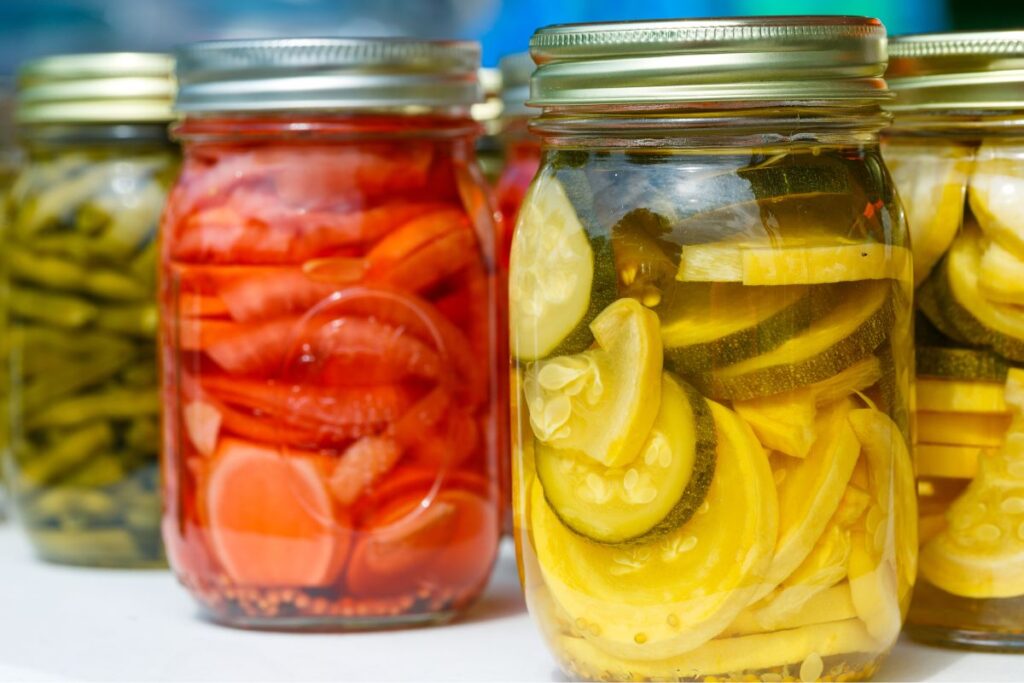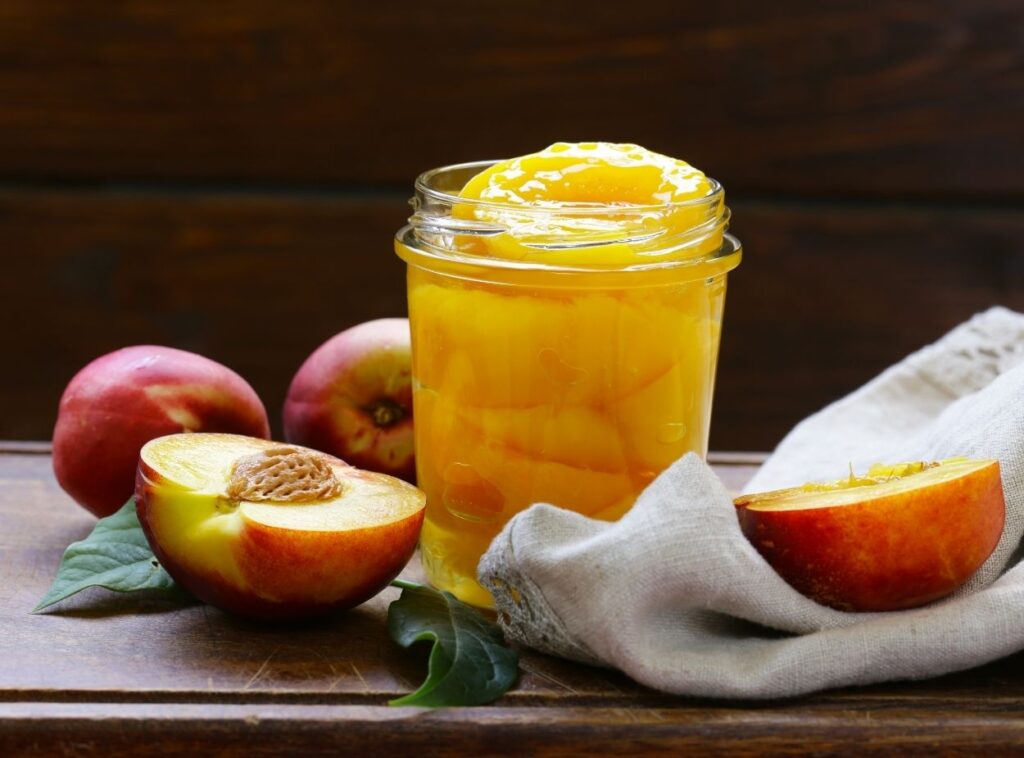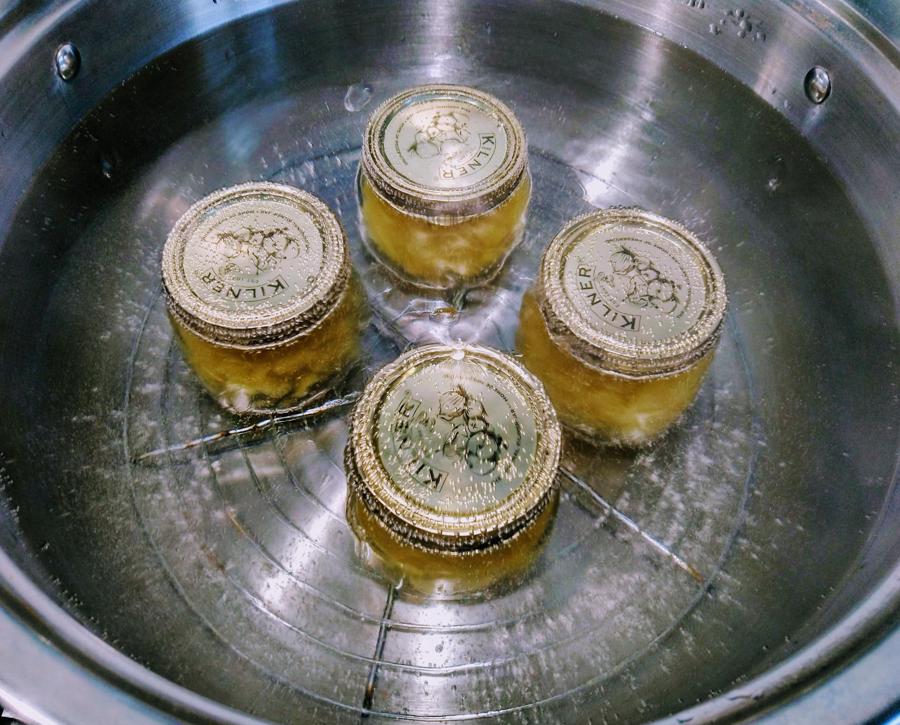Canning is one of the most economical ways to preserve food. In basic terms, canning at home is the same as store-bought canned produce but canning at home uses jars rather than tins.
How does canning preserve food and how do we go about doing it at home? In this post we will cover exactly what canning is, the methods used for canning food, and how this process preserves food without refrigeration for up to a year or more.
Table of Contents
What Is Canning?
Canning is a method of preserving not just fruit and vegetables but also meat and fish. It involves filling jars with the foods we intend to preserve and then sealing the jars at the same time as heating the contents.
This method of preserving foods dates back to the Napoleonic wars when the French government was looking for ways to preserve large amounts of rations to feed soldiers.
How Does Canning Preserve Food
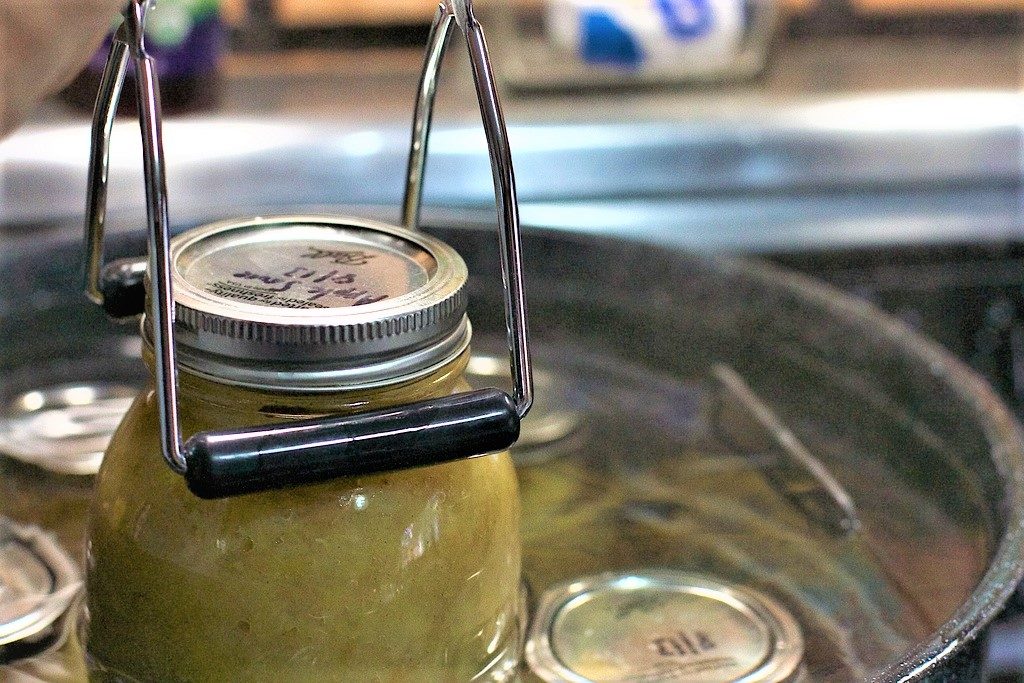
The high percentage of water in fresh foods makes them liable to spoil for a number of reasons.
- Microorganisms such as yeasts, mould, and bacteria grow in numbers over time.
- Enzymes on and within the food break down the structure of the food.
- Oxygen exposure increases the speed and growth of spoilage processes.
These spoilage mechanisms require moisture and oxygen which is present within the foods themselves and also in the environments we typically store food.
Canning prevents multiple spoilage mechanisms from occurring which is what preserves the contents of the jars:
- Removes oxygen from the jars.
- Destroys enzymes within the food.
- Prevents the growth of microorganisms and bacteria.
Canning achieves this by sealing jars by vacuum which removes oxygen, heat processing the food and in some cases, the contents are acidified with vinegar, citrus, or fruit which lowers the pH and creates an environment where microorganisms can’t grow.
There are two methods of canning to make preserves at home, hot water bath canning and pressure canning.
Hot Water Bath Canning
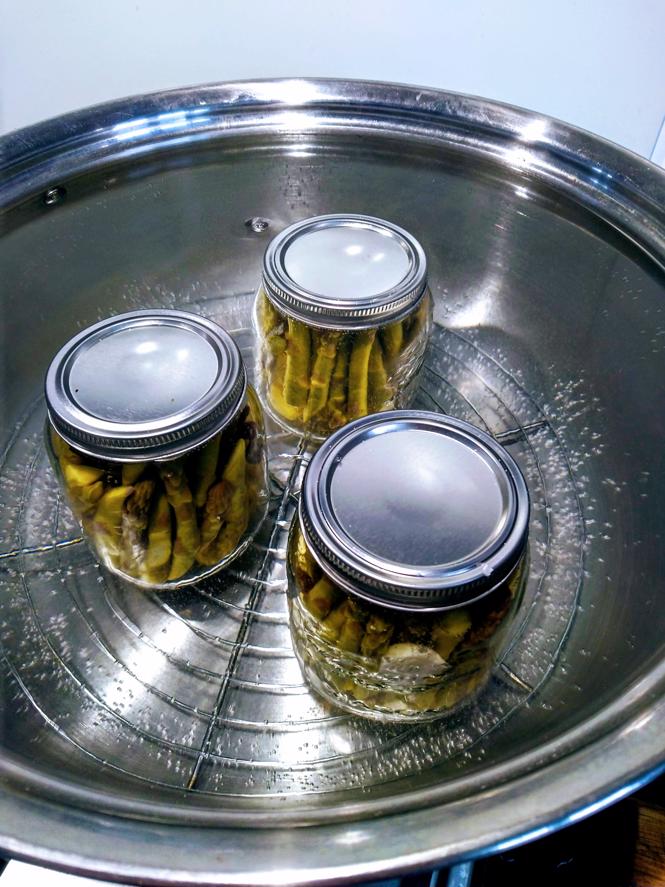
Canning food at home is a simple process and the easiest method of canning is to acidify the fruit or vegetable in either a jam, jelly, pickle, or salsa before filling jars and heating it in a water bath. This method of canning is called hot water bath canning.
A hot water canner is basically an open pot. Jars a filled with food to preserve and lids are screwed on. The jars are completely submerged in boiling water and processed for a length of time depending on the contents.
With hot water canning the food being preserved is acidified to lower the pH. This is done with vinegar, fruit juice, or lemon juice for instance and the acidic environment prevents bacteria, moulds, and yeast from growing.
How water canned foods also tend to have higher levels of sugar which is also a preservative.
Pressure Canning
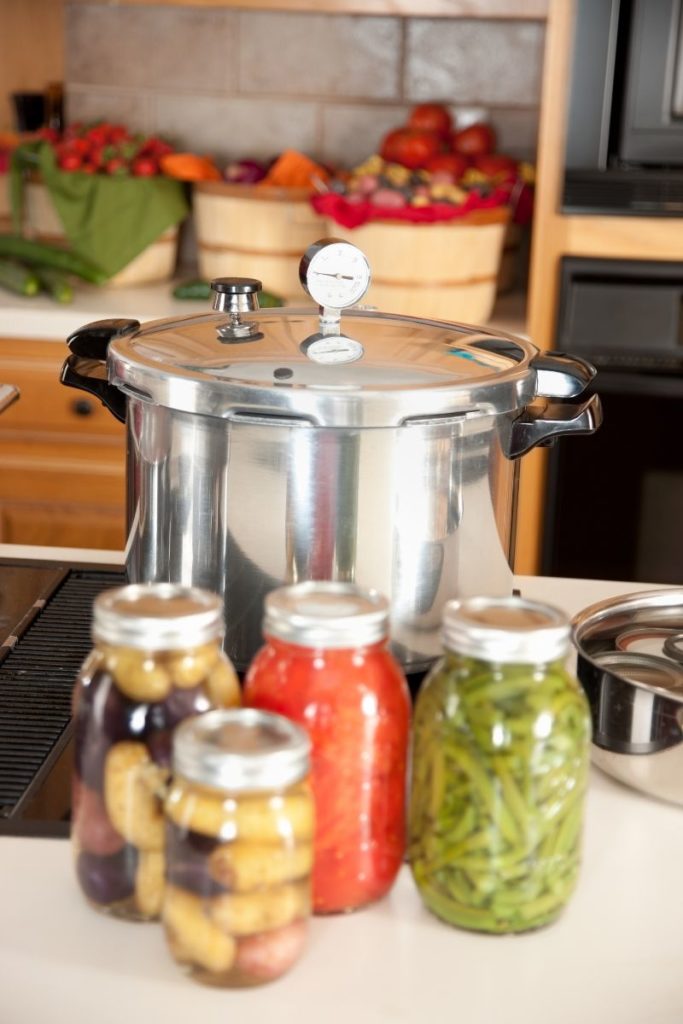
Pressure canning is used for foods that aren’t acidic and for vegetables or fruits that have a pH higher than 4.6.
A pressure canner is a pot that is sealed when heated. The seal causes pressure to build up within the canner and a much higher temperature is reached inside the pressure canner. Jars inside the pressure canner are completely submerged in water and are processed for a length of time depending on the contents.
If the contents of a jar are not acidic enough then to preserve the food properly the jars need to be heated to a higher temperature to prevent spoilage.
A hot water bath can only reach 100C / 212F whereas a pressure canner can reach temperatures of 120C / 250F.
At this higher temperature foods such as meat, poultry, and low-acid fruits and vegetables can be canned safely.
Safety When Canning
Canning is a safe way to preserve food as long as you stick to tried and tested recipes and rules.
A guide to home canning has been released from the USDA which contains everything you need to know to safely can many types of food. This should be referred to before you start canning.
Hot water bath canning is the easiest and most accessible method of canning. When you use hot water canning you will be making jams, jellies, chutney, and salsa which are all high-acid foods.
The acidity and also sugar are preservatives and the hot water bath then seals the food in an environment with no oxygen. This is a really safe method of preserving.
Pressure canning requires dedicated equipment in the form of a pressure canner. You may be tempted to use a pressure cooker but this is not adequate for safe canning.
Pressure canning has been around for a long time and recipes have been thoroughly tested here. As long as you follow these recipes then pressure canning poses no safety risk as long as you follow these guidelines.
